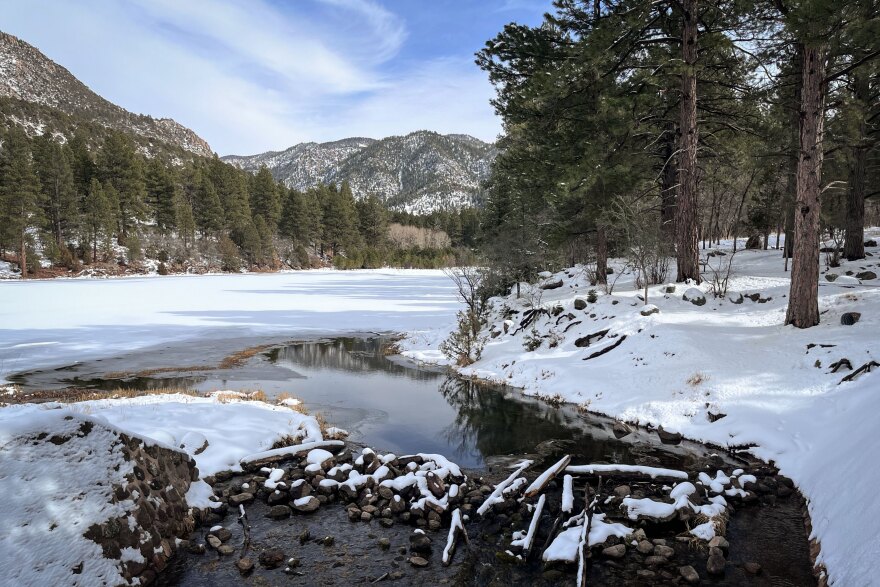After a dry summer and a wet October, Utahns hope this winter brings more snow than last year. But the developing La Niña pattern could leave the state caught in the middle.
The latest seasonal forecast from the National Oceanic and Atmospheric Administration expects above-average snow to Utah’s north and below-average to its south.
“Most of the state sits in equal chances, meaning kind of a coin flip,” said Jon Meyer, assistant state climatologist with the Utah Climate Center. “It could go either way, depending on how that storm track moves.”
With around 95% of Utah’s water supply coming from snow, that coin flip leaves a vital piece up in the air. On top of that, the NOAA forecast expects warmer-than-normal temperatures for nearly the entire state from December through February.

There is some good news, though, at least for northern Utah. The area of expected above-average precipitation in the Pacific Northwest has been inching southward with each new version of NOAA’s winter forecast, Meyer said, and it now includes part of Utah along the Idaho border.
“We are optimistic as we stand in the northern latitudes of the state,” he said. “As we transition down through central and southern Utah, that dry desert Southwest fingerprint from La Niña begins to creep up.”
The NOAA forecast shows below-average precipitation expected in far southern Utah near the Four Corners region. That would be typical of how the Southwest’s weather fares during La Niña, a climate pattern driven by Pacific Ocean water temperatures.
This will be the second consecutive winter with a weak La Niña in effect. After 2025’s historically dry snow season, that news is likely to spur worries about the coming year.
The wild card, Meyer said, would be atmospheric river events, like the ones that fueled southern Utah’s record wet winter in 2023. More and more, research has shown that human-caused climate change leads to dramatic swings between periods of drought and deluge.
The other concern is how much snow will become spring runoff that boosts Utah’s water supplies. When soil is parched by drought, it can soak up snowmelt before it ever flows into streams or reservoirs.
That’s what Central Utah Water Conservancy District Director of Water Policy Jared Hansen saw last year in his region, which stretches from Utah County to the Colorado border near Vernal. He was nervous this winter might bring a repeat performance — until the October rains arrived.
“Compared to last year, we’re in a much, much better position for runoff,” Hansen said. “The next piece of that puzzle’s to now get some snowpack.”
The recent precipitation didn’t erase Utah’s dry conditions — 94% of the state is still experiencing some level of drought. But it did dampen the dirt.

All but one of Utah’s basins are exceeding their median soil moisture levels for this point in October. That’s true even in drought-plagued southern Utah, where the basin near St. George has 133% of its typical soil moisture, as of Oct. 26.
With that kind of set-up, Hansen said even an average winter could go a long way toward replenishing reservoirs depleted by high demand during the hot, dry summer.
“Normal is a great scenario,” he said. “Where the soil moisture is kind of kicking up, normal would be great.”
An average winter would refill Jordanelle and Starvation reservoirs, he said, both of which are currently less than two-thirds full.
There’s no guarantee, though. Utah’s year-to-year swings are happening against the backdrop of a long-term megadrought that has parched the West for over two decades and counting. So, Hansen said, water managers have been conditioned to make their decisions accordingly.
“Because we don't know what's coming, we're going to store everything we can until we start to see what's happening with the snow,” he said. “So, we're attempting to conserve every drop to get ready.”






